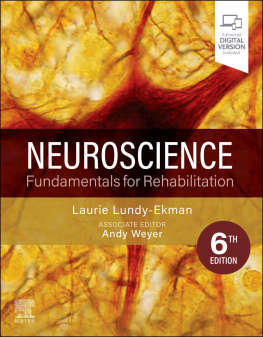Neuroscience Fundamentals for Rehabilitation
6th Edition
Laurie Lundy-Ekman, PhD, PT
Professor Emerita of Physical Therapy
Pacific University
Hillsboro, Oregon
Andy Weyer, Associate Editor, PT, DPT, PhD
Assistant Professor
Physical Therapy Program
Samuel Merritt University
Oakland, California

Quick Reference Figures
Frequently consulted diagrams are provided here for quick reference. The diagrams included here are:
- Dermatomes and peripheral nerve distributions
- Myotomes
- Thalamic nuclei
- The effects of cerebral cortex lesions
Dermatomes and Peripheral Nerve Distributions

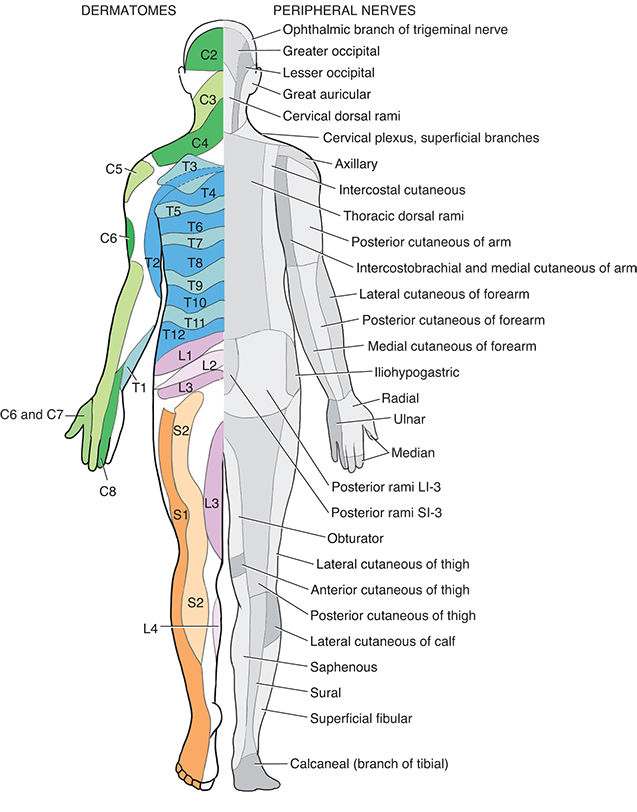
Dermatomes in color on the left side of each diagram. Peripheral nerve distributions in gray on the right side of each diagram. See Figures 10.7 and 10.8.
Myotomes
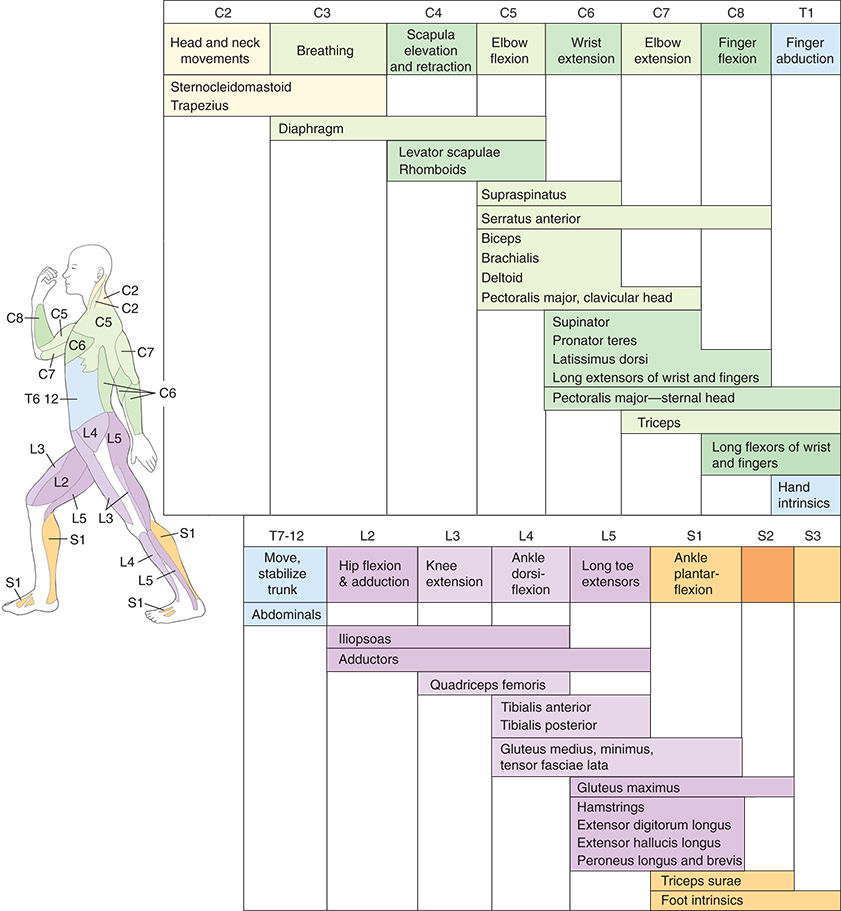
Spinal nerve innervation of skeletal muscles. See Figure 19.7
Thalamic Nuclei
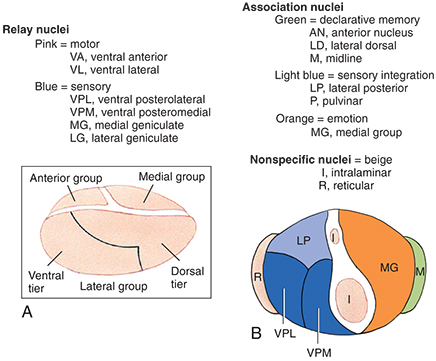
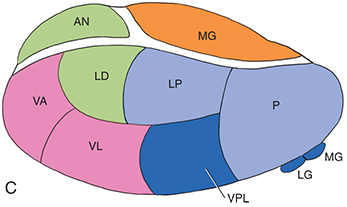
See Figure 27.2.
The Effects of Cerebral Cortex Lesions
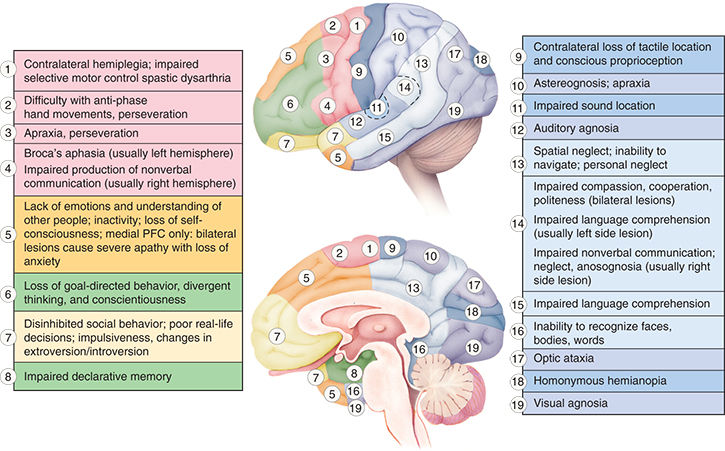
See Figure 30.7.
Copyright
Elsevier
3251 Riverport Lane
St. Louis, Missouri 63043
NEUROSCIENCE: FUNDAMENTALS FOR REHABILITATION, SIXTH EDITION
ISBN: 978-0-323-79267-7
Copyright 2023 by Elsevier Inc. All rights reserved.
No part of this publication may be reproduced or transmitted in any form or by any means, electronic or mechanical, including photocopying, recording, or any information storage and retrieval system, without permission in writing from the publisher. Details on how to seek permission, further information about the Publishers permissions policies and our arrangements with organizations such as the Copyright Clearance Center and the Copyright Licensing Agency, can be found at our website: www.elsevier.com/permissions.
This book and the individual contributions contained in it are protected under copyright by the Publisher (other than as may be noted herein).
Notice
Practitioners and researchers must always rely on their own experience and knowledge in evaluating and using any information, methods, compounds or experiments described herein. Because of rapid advances in the medical sciences, in particular, independent verification of diagnoses and drug dosages should be made. To the fullest extent of the law, no responsibility is assumed by Elsevier, authors, editors or contributors for any injury and/or damage to persons or property as a matter of products liability, negligence or otherwise, or from any use or operation of any methods, products, instructions, or ideas contained in the material herein.
Previous editions copyrighted 2018, 2013, 2007, 2002, and 1998.
Director, Content Development: Laurie Gower
Content Strategist: Lauren Willis
Content Development Specialist: Brooke Kannady
Publishing Services Manager: Julie Eddy
Senior Project Manager: Cindy Thoms
Design Direction: Ryan Cook
Printed in Canada
Last digit is the print number:987654321

Contributors
Katie (Catherine) Siengsukon, PT, PhD
Assistant Professor
Director of Sleep, Health, and Wellness Lab
Physical Therapy and Rehab Science Department
University of Kansas Medical Center
Kansas City, Kansas
Denise Goodwin, OD, FAAO
Professor of Optometry
Pacific University College of Optometry
Forest Grove, Oregon
Cathy (Cathryn) Peterson, PT, EdD
ProfessorDepartment of Physical Therapy
University of the Pacific
Stockton, California
Andy Weyer, PT, DPT, PhD
Assistant Professor
Physical Therapy Program
Samuel Merritt University
Oakland, California
Associate Editor
Contributors to Previous Editions
Anne Burleigh-Jacobs, BS, PhD
in 1st and 2nd Editions
Lisa Stenho-Bittel, PT, PhD
in 2nd and 3rd Editions
Catherine Siengsukon, PT, PhD
in 5th Edition
Denise Goodwin, OD, FAAO
in 5th Edition
Cathryn (Cathy) Peterson, PT, EdD
in 5th Edition
Preface
How do we perceive, feel emotions, move, learn, and remember? And what are the common neural disorders that affect these processes? Neuroscience is the attempt to answer these questions. However, the answers in neuroscience are not static; knowledge progresses rapidly. This sixth edition of Neuroscience: Fundamentals for Rehabilitation reflects updated concepts and recent research. Yet the original purpose of the book remains unaltered: to present carefully selected, clinically important information essential for understanding the neurologic disorders encountered by therapists. Feedback from students, clinicians, and educators indicates that they find the book exceptionally useful both as an introduction to neuroscience and as a reference during clinical practice.
This text is unique in addressing neuroscience issues critical for the practice of physical rehabilitation. Clinical issues including abnormal muscle tone, chronic pain, and control of movement are emphasized, whereas topics often discussed extensively in neuroscience texts, such as the function of neurons in the visual cortex, are omitted.
The text has six sections: Overview of Neurology, Neuroscience at the Cellular Level, Development of the Nervous System, Vertical Systems, Regions, and Neurologic Tests. The Overview of Neurology section introduces neuroanatomy, neurologic disorders, neurologic evaluation, and neuroimaging. Neuroscience at the Cellular Level discusses the variety of neural cells, neuron ion channels, membrane potentials, synapses, extrasynaptic transmission, and mechanisms of learning/memory. Development of the Nervous System covers embryology of the nervous system and developmental disorders. Three systems comprise the Vertical Systems section: somatosensory, autonomic, and motor. The somatosensory system transmits information from the skin and the musculoskeletal system to the brain. The autonomic system conveys information between the brain and smooth muscles, viscera, and glands. The motor system transmits information from the brain to the skeletal muscles. Disorders that affect these three systems are presented. Regions covers the peripheral nervous system, spinal region, brainstem and cerebellar region, and cerebrum. The final section explains the techniques and interpretation of

